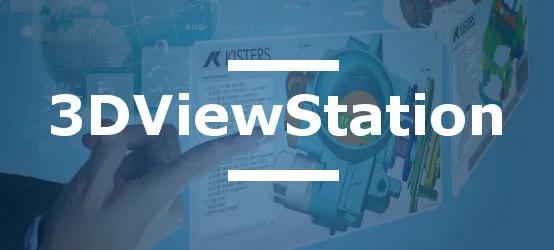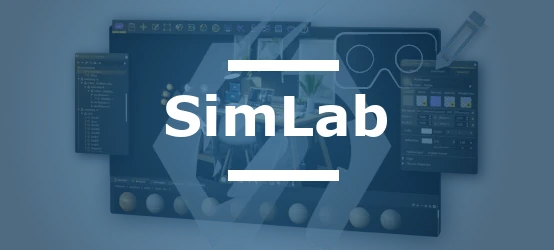Complete technical guide to optimize your conversion workflows and solve interoperability challenges
📋 Table of Contents
3D data interoperability represents a major technical challenge in modern industrial workflows. 3D mesh formats, which define the geometric representation of objects through triangulation, form the foundation of numerous applications ranging from real-time visualization to 3D printing. The proliferation of software and technological ecosystems generates compatibility issues that directly impact the productivity of technical teams.
This diversity of formats results from specific application needs: web optimization, metadata preservation, data compression, or animation support. Each format presents distinct advantages depending on the usage context, but this specialization creates technological silos. CAD engineers and technicians must navigate between these different standards while preserving the integrity of geometric data.
🔓 Open formats and standards
STL: The 3D printing standard
The STL (STereoLithography) format remains the reference for 3D printing since 1987. Its structural simplicity - storing triangles as coordinates and normals - guarantees universal compatibility. Data shows that CADfix supports STL import/export in ASCII and binary versions, confirming its massive adoption in the industry.
✅ Technical advantages
- • Structure and parsing simplicity
- • Universal support by all software
- • Binary format optimized for large files
- • Ideal for 3D printing workflows
⚠️ Identified limitations
- • Absence of colors and textures
- • No object hierarchy
- • Large uncompressed files
- • No material information
OBJ: Versatility and simplicity
The Wavefront OBJ format combines simplicity and versatility since the 1990s. Interoperability solutions like 3DViewStation and CADfix natively integrate OBJ support, testifying to its relevance in modern workflows. Its plain text structure facilitates debugging and manual modifications.
OBJ handles UV texture coordinates and per-vertex normals, enabling quality rendering. The associated MTL file defines material properties, creating a complete ecosystem for 3D visualization. This modular approach explains its adoption in 3D content creation pipelines.
glTF: The future of web 3D
The GL Transmission Format (glTF) 2.0 revolutionizes 3D content distribution on the web. Developed by the Khronos Group, it optimizes real-time rendering performance while preserving visual fidelity. Its JSON architecture facilitates integration into modern web applications.
🎯 Preferred use cases
WebGL applications, mobile augmented reality, e-commerce visualization, interactive prototyping, and distribution on social platforms.
USD: The future of collaborative pipelines
Universal Scene Description (USD), developed by Pixar, emerges as a standard for complex collaborative workflows. Its ability to manage scene compositions and temporal variations addresses the needs of industrial and audiovisual productions. Adoption by major visualization solutions confirms its disruptive potential.
🏢 Dominant proprietary formats
Proprietary formats maintain their position through native integration in their respective ecosystems and advanced functionalities not available in open standards.
FBX: The Autodesk ecosystem
The FBX (Filmbox) format version 7.5 dominates exchanges between Autodesk software and third-party applications. Its native support for animations, complex hierarchies, and metadata makes it an essential choice for integrated workflows. Technical data confirms its extended compatibility in interoperability solutions.
🔬 Specialized and emerging formats
Specific sectoral needs have generated formats optimized for particular applications, offering technical advantages in niche domains.
3MF: Microsoft 3D Manufacturing Format
The 3MF format version 1.2.3 addresses STL limitations for modern 3D printing. It integrates colors, materials, and manufacturing information in an optimized ZIP container. Its adoption by the Windows ecosystem and professional 3D printers makes it an emerging standard.
VRML: Web 3D precursors
Virtual Reality Modeling Language (VRML) versions 1.0 and 2.0 remain supported by interoperability solutions for compatibility with historical archives. Although superseded by more modern technologies, it retains relevance in certain heritage contexts.
🎯 How to choose the right format according to usage?
Optimal format selection requires a multi-criteria analysis taking into account technical constraints, quality requirements, and application objectives.
🔍 Technical decision matrix
| Application | Recommended format | Determining criteria | Alternatives |
|---|---|---|---|
| 3D Printing | STL, 3MF | Slicer compatibility, resolution | OBJ |
| Web/Mobile | glTF 2.0 | Performance, compression, streaming | OBJ, FBX |
| Collaborative pipeline | USD, FBX | Versioning, metadata, hierarchy | glTF |
| Scientific visualization | OBJ, STL | Geometric precision, simplicity | PLY |
🏗️ Use case: Architectural pipeline
An architecture firm working on a shopping center project must optimize its exchanges between Revit, rendering software, and virtual reality platform. The typical workflow combines IFC export from Revit, conversion to FBX for material adjustments, then to glTF for web distribution. This chain preserves BIM metadata while optimizing final performance.
🔧 Solving interoperability problems
Interoperability challenges generally result from differences in specification interpretation, coordinate systems, or tessellation methods. A methodical approach allows identifying and correcting these issues.
⚠️ Frequently encountered problems
🔄 Geometric data loss
- • Tessellation degradation
- • Surface normal removal
- • UV coordinate modification
- • Numerical precision loss
🎨 Material alteration
- • Colors not preserved
- • Missing or deformed textures
- • Unsupported PBR properties
- • Incorrect UV mapping
🛠️ Diagnostic and correction methods
Specialized tools like CADIQ allow precise identification of interoperability defects. Automated diagnosis detects topology, geometry, and annotation problems, facilitating targeted data correction.
🔍 Step 1: Validation
Comparative analysis of source and target models to identify geometric and topological deviations.
⚙️ Step 2: Optimization
Adjustment of conversion parameters according to quality requirements and performance constraints.
✅ Step 3: Control
Final verification of data integrity and functional validation in the target application.
💡 Optimized conversion strategies
Conversion efficiency depends on understanding the specificities of each format and applying an adapted strategy. Solutions like CADfix offer programmable interfaces enabling automation of complex conversion workflows.
🎯 Usage-oriented conversion
- Tessellation adaptation according to destination
- Texture optimization for memory constraints
- Selective preservation of relevant metadata
- Intelligent compression according to required performance
🔄 Iterative process
- Short-loop validation tests
- Progressive parameter adjustment
- Documentation of optimal configurations
- Automation of validated workflows
📋 Best practices and recommendations
Interoperability workflow optimization relies on adopting proven methodologies and implementing rigorous quality control processes.
🏗️ Why structure your conversion workflows?
Structuring conversion processes reduces error risks and improves result reproducibility. Technical teams benefit from a standardized approach that facilitates skill development and configuration maintenance.
🎯 Recommended workflow for quality validation
Source data cleaning, supported format validation
Application of optimized parameters, operation traceability
Automated comparison, critical property verification
Modification documentation, configuration archiving
📊 Metadata management and quality control
Preserving critical metadata requires prior identification of essential information for the target application. Analysis solutions like CADIQ allow quantifying conversion fidelity and identifying acceptable deviations.
✅ Metadata to preserve
- • Geometric: Dimensions, tolerances, mass properties
- • Visual: Colors, textures, material properties
- • Functional: Hierarchy, assemblies, constraints
- • Process: Annotations, PMI, saved views
📏 Quality metrics
- • Geometric: Volume deviation < 0.1%
- • Topological: Face/edge preservation
- • Visual: Chromatic fidelity > 95%
- • Performance: Optimal compression ratio
🎯 Summary and perspectives
Mastering 3D mesh formats and their interoperability constitutes a competitive advantage in the modern industrial ecosystem. Open formats like STL, OBJ, and glTF offer extended compatibility, while proprietary solutions like FBX preserve advanced functionalities. Emerging formats like USD and 3MF address specialized needs of collaborative workflows and 3D printing.
🚀 Key points for optimization
🎯 Strategy
- • Application needs analysis
- • Optimal format/usage selection
- • Standardized workflow
🔧 Technical
- • Automated validation
- • Rigorous quality control
- • Process documentation
📈 Performance
- • Task automation
- • Continuous optimization
- • Team skill development
Continuous technological evolution requires active monitoring of new standards and improvements in interoperability solutions. Investment in specialized tools and team training constitute the foundations of an efficient and sustainable interoperability strategy.



